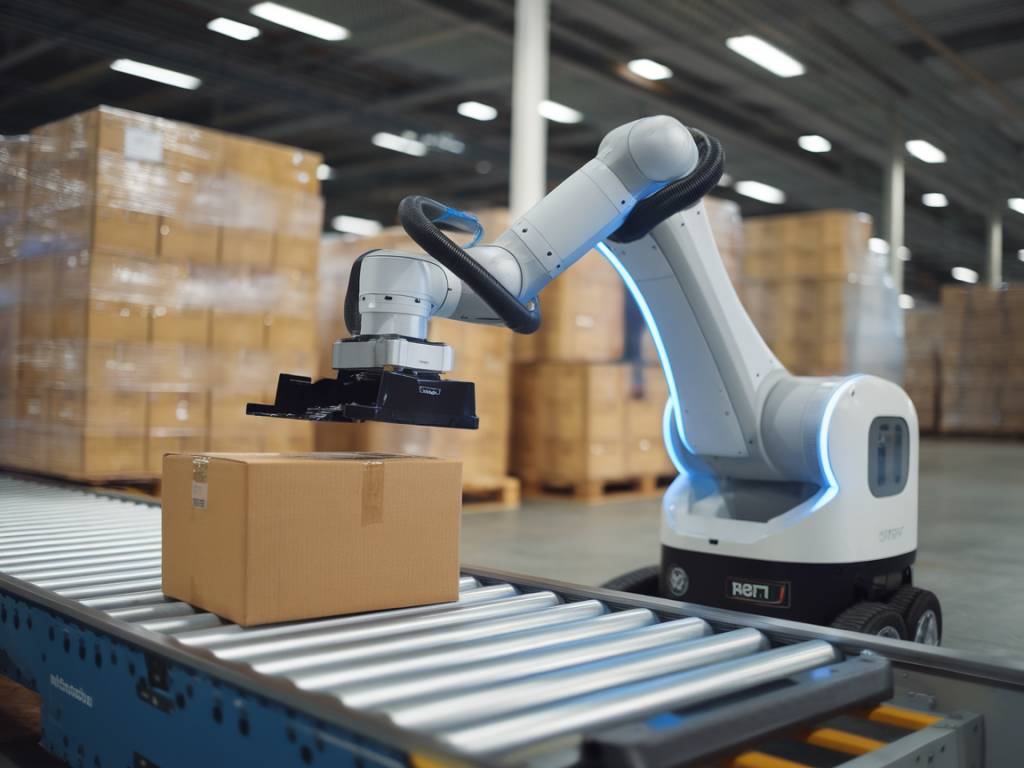The logistics sector has long been a cornerstone of global supply chains, instrumental in ensuring that goods and services are delivered efficiently, timely, and at the lowest possible cost. However, the ever-increasing demand for rapid delivery and the complexities of global trade have pushed traditional logistics methods to their limits. This is where collaborative robots, commonly known as cobots, come into play, offering a revolutionary advancement in enhancing human efficiency within the logistics sector.
The Rise of Collaborative Robots in Logistics
Collaborative robots or cobots are designed to work alongside humans, rather than replacing them. Unlike traditional industrial robots that operate in isolation from human workers, cobots are equipped with advanced sensors and software that allow them to share workspace with humans safely. These robots are not only versatile but are also easier to program and deploy, making them ideal for various logistics tasks.
Advantages of Using Cobots in Logistics
The integration of cobots in the logistics sector brings multiple advantages, including:
- Increased Flexibility: Cobots are highly adaptable and can be reprogrammed for multiple tasks, from packaging and palletizing to sorting and inspecting goods.
- Cost-Effective: Unlike traditional robots that require significant investment and space, cobots are affordable and can be integrated into existing facilities without substantial modifications.
- Enhanced Safety: Cobots come equipped with advanced sensors and safety features such as force feedback and emergency stop functionalities, ensuring a secure work environment for human workers.
- Improved Productivity: By handling repetitive and physically demanding tasks, cobots free human workers to focus on more complex and value-added activities, thus boosting overall productivity.
Applications of Cobots in Logistics
Cobots are being deployed across various stages of the logistics process, revolutionizing the way tasks are performed:
Order Fulfillment and Picking
Order fulfillment is a critical aspect of logistics that involves picking and packaging goods for delivery. Cobots can be integrated with warehouse management systems to accurately and efficiently pick items from storage, reducing errors and speeding up the process.
Sorting and Palletizing
Sorting thousands of parcels daily is labor-intensive and error-prone. Cobots equipped with advanced vision systems can rapidly and accurately sort parcels by size, weight, and destination. Similarly, for palletizing tasks, cobots can stack items neatly and securely, reducing the risk of damage.
Material Handling
Cobots are also used for material handling within warehouses and distribution centers. They can transport goods from one location to another, ensuring a smooth and continuous workflow. Additionally, cobots can work in environments that may be unsafe or undesirable for human workers, such as cold storage areas.
Case Studies of Cobots in Action
Several notable companies have successfully integrated cobots into their logistics operations, demonstrating their transformative potential:
Amazon
Amazon has long been at the forefront of employing cutting-edge technology in its logistics operations. The e-commerce giant uses cobots for tasks such as order picking and moving heavy items within its fulfillment centers, significantly reducing the time and labor required for these tasks.
DHL
DHL has implemented cobots in various facilities worldwide to streamline operations. For example, in its supply chain operations in North America, cobots are used for repetitive tasks such as sorting and packing, allowing human workers to focus on more strategic activities.
Ocado
The British online supermarket Ocado uses cobots in its highly automated warehouses to pick and pack orders. These cobots work alongside human workers, ensuring a seamless and efficient order fulfillment process.
Challenges and Future Prospects
While the benefits of cobots are undeniable, there are also challenges that need to be addressed:
- Integration with Existing Systems: Integrating cobots into established logistics operations can be complex and may require significant adjustments to existing workflows and systems.
- Training and Skill Development: Human workers need to be trained to work effectively with cobots, which can require time and investment in skill development.
- Initial Investment: Although cobots are more cost-effective than traditional robots, the initial investment in purchasing and integrating them can still be a barrier for some companies.
Looking ahead, the future prospects for cobots in logistics are promising. Advances in artificial intelligence, machine learning, and sensor technology will further enhance the capabilities of cobots, making them even more integral to logistics operations. Additionally, as costs continue to decrease and more companies recognize the efficiency gains, the adoption of cobots is expected to accelerate.
In summary, collaborative robots represent a significant advancement in the logistics sector, offering increased flexibility, improved productivity, and enhanced safety. From order fulfillment and sorting to material handling, cobots are transforming the way logistics operations are conducted. While challenges remain, the future looks bright for cobots, and their adoption is set to revolutionize the logistics industry.




